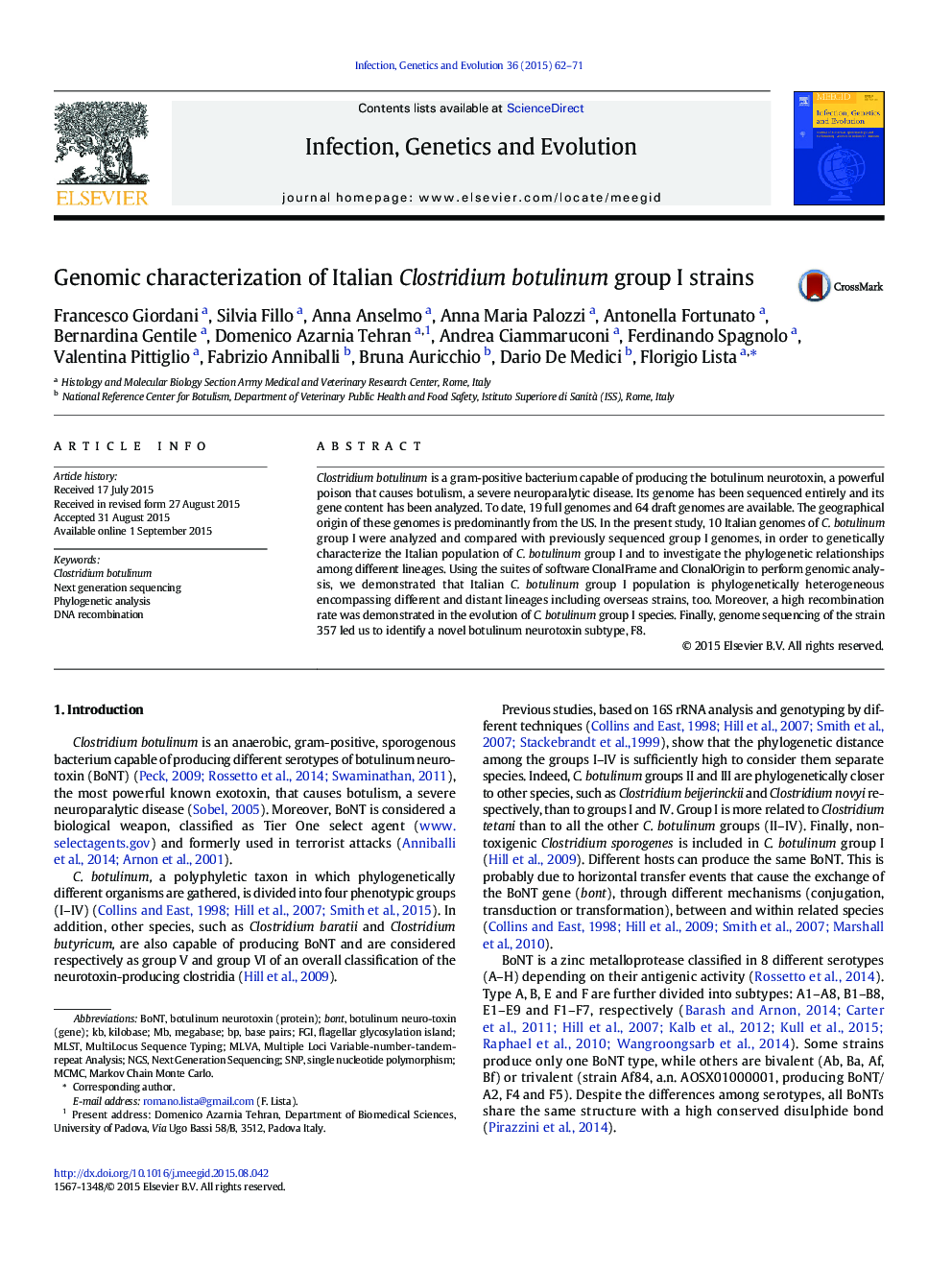| Article ID | Journal | Published Year | Pages | File Type |
|---|---|---|---|---|
| 5908521 | Infection, Genetics and Evolution | 2015 | 10 Pages |
â¢We sequenced 10 Clostridium botulinum group I strains isolated in Italy.â¢We phylogenetically compared these genomes with 10 previously sequenced ones.â¢We studied the recombination rate and fluxes among the analyzed genomes.â¢The Italian strains are heterogeneous and distributed in different lineages.â¢Recombination rate is high, recombination exchanges take place between all lineage.
Clostridium botulinum is a gram-positive bacterium capable of producing the botulinum neurotoxin, a powerful poison that causes botulism, a severe neuroparalytic disease. Its genome has been sequenced entirely and its gene content has been analyzed. To date, 19 full genomes and 64 draft genomes are available. The geographical origin of these genomes is predominantly from the US. In the present study, 10 Italian genomes of C. botulinum group I were analyzed and compared with previously sequenced group I genomes, in order to genetically characterize the Italian population of C. botulinum group I and to investigate the phylogenetic relationships among different lineages. Using the suites of software ClonalFrame and ClonalOrigin to perform genomic analysis, we demonstrated that Italian C. botulinum group I population is phylogenetically heterogeneous encompassing different and distant lineages including overseas strains, too. Moreover, a high recombination rate was demonstrated in the evolution of C. botulinum group I species. Finally, genome sequencing of the strain 357 led us to identify a novel botulinum neurotoxin subtype, F8.
